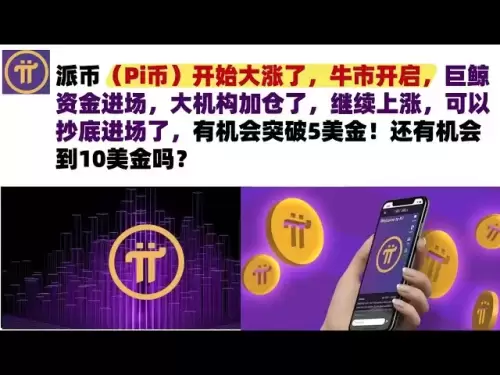-
 Bitcoin
Bitcoin $116700
0.48% -
 Ethereum
Ethereum $4213
6.27% -
 XRP
XRP $3.280
1.22% -
 Tether USDt
Tether USDt $1.000
0.02% -
 BNB
BNB $805.1
2.46% -
 Solana
Solana $180.2
2.65% -
 USDC
USDC $0.0000
0.02% -
 Dogecoin
Dogecoin $0.2412
8.50% -
 TRON
TRON $0.3356
-1.11% -
 Cardano
Cardano $0.8108
3.59% -
 Hyperliquid
Hyperliquid $43.89
8.53% -
 Chainlink
Chainlink $21.15
10.75% -
 Stellar
Stellar $0.4502
1.41% -
 Sui
Sui $3.935
4.69% -
 Bitcoin Cash
Bitcoin Cash $570.7
-1.75% -
 Hedera
Hedera $0.2636
3.28% -
 Avalanche
Avalanche $24.25
4.48% -
 Ethena USDe
Ethena USDe $1.001
0.03% -
 Litecoin
Litecoin $122.0
-0.08% -
 Toncoin
Toncoin $3.445
2.68% -
 UNUS SED LEO
UNUS SED LEO $8.979
-0.08% -
 Shiba Inu
Shiba Inu $0.00001379
6.73% -
 Uniswap
Uniswap $10.91
2.00% -
 Polkadot
Polkadot $4.106
5.39% -
 Dai
Dai $1.000
0.02% -
 Pepe
Pepe $0.00001227
9.07% -
 Bitget Token
Bitget Token $4.507
0.72% -
 Cronos
Cronos $0.1576
3.40% -
 Monero
Monero $272.0
-1.68% -
 Ethena
Ethena $0.7502
21.27%
What does the sudden expansion of SHIB's USDT trading pair premium mean?
The sudden expansion of SHIB's USDT trading pair premium has sparked interest and discussion, signaling potential market dynamics and trading opportunities for investors.
Apr 19, 2025 at 08:57 pm
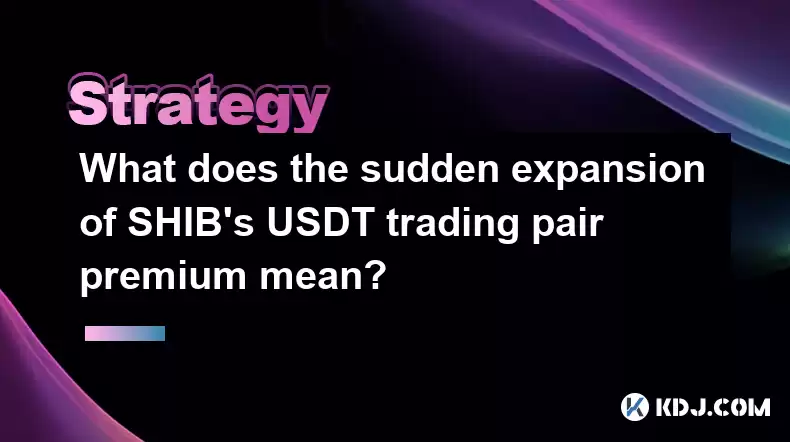
The sudden expansion of SHIB's USDT trading pair premium has sparked significant interest and discussion within the cryptocurrency community. This phenomenon refers to the difference between the price of SHIB when paired with USDT on various exchanges compared to its price in other trading pairs. Understanding this premium is crucial for investors and traders as it can signal various market dynamics and potential trading opportunities.
What is a Trading Pair Premium?
A trading pair premium is the difference in price of a cryptocurrency when it is traded against different assets. For SHIB, this typically involves comparing its price in the SHIB/USDT pair to other pairs like SHIB/BTC or SHIB/ETH. When the SHIB/USDT pair trades at a higher price than other pairs, it is said to have a premium. This premium can be influenced by various factors such as liquidity, market sentiment, and trading volume.
Factors Contributing to the Expansion of SHIB's USDT Premium
Several factors can contribute to the sudden expansion of SHIB's USDT trading pair premium. Liquidity is a primary driver; if there is a higher demand for SHIB on exchanges that primarily use USDT, this can lead to a higher price in the SHIB/USDT pair. Market sentiment also plays a significant role; if traders perceive USDT as a more stable asset during volatile times, they might prefer trading SHIB against USDT, thus increasing its premium.
Trading volume is another critical factor. If there is a surge in trading activity on exchanges that predominantly use USDT, this can cause the SHIB/USDT pair to trade at a higher price. Additionally, arbitrage opportunities can influence the premium. Traders might buy SHIB at a lower price on one exchange and sell it at a higher price on another, which can temporarily inflate the premium.
Impact on SHIB's Market Dynamics
The expansion of the SHIB/USDT premium can have several implications for SHIB's market dynamics. Increased volatility is one potential outcome; as the premium widens, it can lead to more significant price swings as traders attempt to capitalize on the difference. Arbitrage trading can also become more prevalent, with traders moving SHIB between exchanges to exploit the price difference.
Market sentiment can be affected as well. A widening premium might signal to some investors that there is strong demand for SHIB, potentially driving more buying interest. Conversely, it could also lead to concerns about market manipulation or liquidity issues, causing some investors to be more cautious.
How Traders Can Respond to the Premium Expansion
Traders can take several approaches to respond to the expansion of SHIB's USDT premium. Monitoring liquidity across different exchanges is crucial. By understanding where the highest liquidity for SHIB/USDT exists, traders can make more informed decisions about where to execute their trades.
Arbitrage trading is another strategy that traders might employ. Here are the steps to engage in arbitrage trading:
- Identify the premium: Use trading platforms or tools to monitor the price difference between SHIB/USDT and other pairs like SHIB/BTC.
- Select exchanges: Choose exchanges with significant liquidity for both pairs.
- Execute trades: Buy SHIB at a lower price on one exchange and sell it at a higher price on another.
- Account for fees: Ensure that the premium is large enough to cover transaction fees and still yield a profit.
Risk management is essential when trading based on premiums. Traders should set stop-loss orders to mitigate potential losses if the market moves against their positions. Additionally, staying informed about market news and sentiment can help traders anticipate changes in the premium.
Analyzing the Premium's Sustainability
Determining whether the expansion of SHIB's USDT premium is sustainable involves analyzing several factors. Market trends can provide insights into whether the premium is likely to persist. If the premium is driven by a temporary surge in demand or a specific event, it might not be sustainable in the long term.
Liquidity levels are also crucial. If the premium is supported by strong liquidity on exchanges, it may be more sustainable. Conversely, if liquidity is low, the premium might be more susceptible to rapid changes.
Regulatory news can impact the premium as well. Any developments that affect the stability of USDT or the broader cryptocurrency market can influence the premium. Traders should stay updated on regulatory changes and their potential impact on SHIB and USDT.
Case Studies of Similar Premium Expansions
Examining past instances of similar premium expansions can provide valuable insights. For example, during periods of high market volatility, other cryptocurrencies have experienced similar premiums in their USDT pairs. Analyzing these case studies can help traders understand the potential outcomes and strategies that were effective in those situations.
In one notable case, a cryptocurrency experienced a significant premium in its USDT pair due to a sudden increase in demand from a specific region where USDT was the preferred trading pair. Traders who recognized this trend early were able to capitalize on the premium through arbitrage trading. However, once the demand subsided, the premium quickly normalized.
Another case involved a cryptocurrency that saw its USDT premium expand due to a liquidity crisis on a major exchange. Traders who were aware of the liquidity issues were able to anticipate the premium's expansion and adjust their trading strategies accordingly.
Frequently Asked Questions
Q: Can the expansion of SHIB's USDT premium be manipulated by large traders?
A: Yes, large traders or "whales" can influence the premium by executing large trades on specific exchanges. This can temporarily inflate the premium, but such manipulation is often short-lived as the market adjusts.
Q: How does the SHIB/USDT premium affect long-term holders of SHIB?
A: For long-term holders, the premium might not have a significant impact on their overall strategy. However, it can provide short-term trading opportunities that they might choose to exploit.
Q: Are there any tools specifically designed to track SHIB's USDT premium?
A: Yes, several cryptocurrency analytics platforms offer tools to monitor trading pair premiums, including those for SHIB/USDT. These tools can help traders identify and track premium expansions in real-time.
Q: How does the SHIB/USDT premium compare to premiums in other cryptocurrency trading pairs?
A: The SHIB/USDT premium can be compared to premiums in other pairs like SHIB/BTC or SHIB/ETH. Each pair's premium is influenced by different factors, such as liquidity and market sentiment, but the principles of monitoring and trading based on premiums remain similar.
Disclaimer:info@kdj.com
The information provided is not trading advice. kdj.com does not assume any responsibility for any investments made based on the information provided in this article. Cryptocurrencies are highly volatile and it is highly recommended that you invest with caution after thorough research!
If you believe that the content used on this website infringes your copyright, please contact us immediately (info@kdj.com) and we will delete it promptly.
- Trump, Crypto Vehicle, and WLFI Tokens: A New York Minute on the Latest Buzz
- 2025-08-10 00:30:12
- Wheat Penny Fortune: Unearthing Valuable Coins in Your Pocket Change
- 2025-08-10 00:35:19
- AI Coin Mania: Dubai Millionaires Eye 20x Gains!
- 2025-08-09 23:10:12
- ChatGPT's Hot Takes: Meme Coins to Buy Now for a Wild 2025!
- 2025-08-09 23:10:12
- Jurassic Park Vibes in Your Pocket: The Colourful Canadian Coin Featuring a Dinosaur Eye
- 2025-08-09 23:50:12
- Altcoins on the Radar: VeChain, Ethereum, and the Shifting Crypto Landscape
- 2025-08-09 23:50:12
Related knowledge
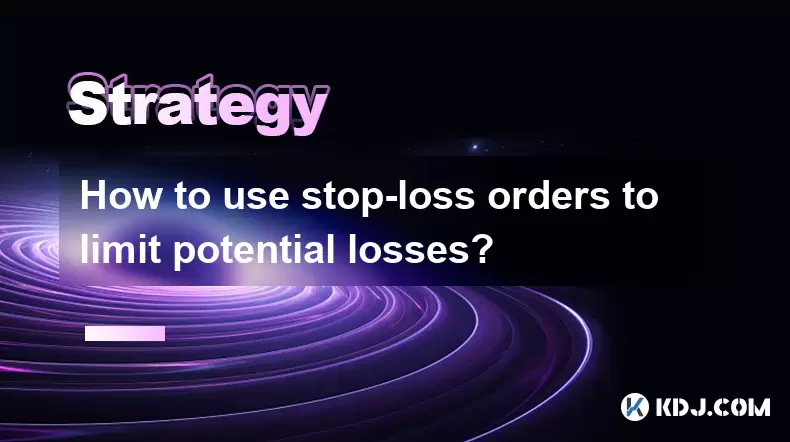
How to use stop-loss orders to limit potential losses?
Aug 08,2025 at 02:01pm
Understanding Stop-Loss Orders in Cryptocurrency TradingA stop-loss order is a risk management tool used by traders to automatically sell a cryptocurr...
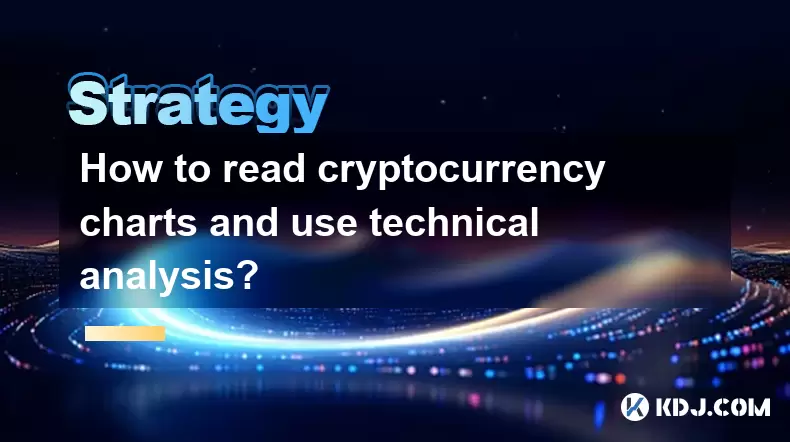
How to read cryptocurrency charts and use technical analysis?
Aug 08,2025 at 11:08am
Understanding the Basics of Cryptocurrency ChartsCryptocurrency charts are graphical representations of price movements over time. These charts are es...
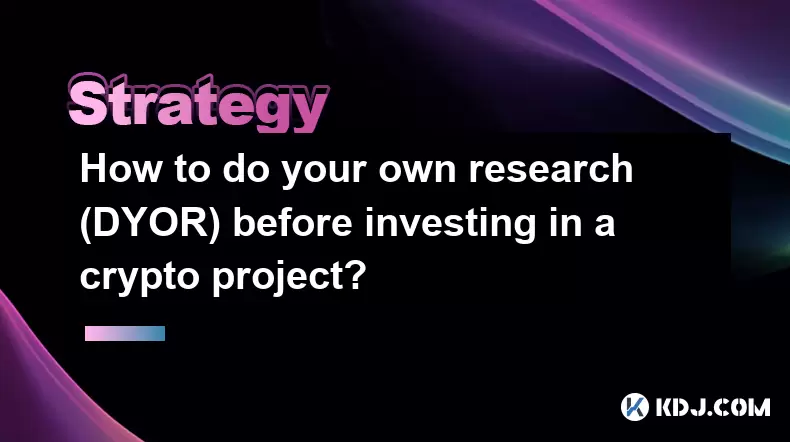
How to do your own research (DYOR) before investing in a crypto project?
Aug 08,2025 at 09:07pm
Understanding the Core Principles of DYOR in CryptocurrencyEngaging in due diligence before investing in any cryptocurrency project is essential to mi...
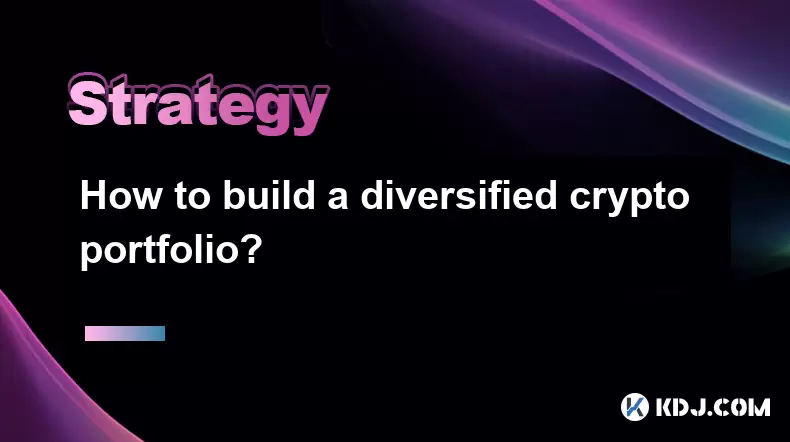
How to build a diversified crypto portfolio?
Aug 09,2025 at 12:21pm
Understanding the Importance of Diversification in CryptoDiversification in the cryptocurrency space is a strategy used to reduce risk by spreading in...

How to avoid common crypto investment mistakes?
Jul 13,2025 at 01:35am
Understanding the Risks of Crypto InvestmentInvesting in cryptocurrency can be highly rewarding, but it also comes with significant risks. One of the ...

What is a long-short crypto strategy?
Jul 15,2025 at 10:56am
Understanding the Basics of a Long-Short Crypto StrategyA long-short crypto strategy is an investment approach where traders simultaneously take long ...

How to use stop-loss orders to limit potential losses?
Aug 08,2025 at 02:01pm
Understanding Stop-Loss Orders in Cryptocurrency TradingA stop-loss order is a risk management tool used by traders to automatically sell a cryptocurr...

How to read cryptocurrency charts and use technical analysis?
Aug 08,2025 at 11:08am
Understanding the Basics of Cryptocurrency ChartsCryptocurrency charts are graphical representations of price movements over time. These charts are es...

How to do your own research (DYOR) before investing in a crypto project?
Aug 08,2025 at 09:07pm
Understanding the Core Principles of DYOR in CryptocurrencyEngaging in due diligence before investing in any cryptocurrency project is essential to mi...

How to build a diversified crypto portfolio?
Aug 09,2025 at 12:21pm
Understanding the Importance of Diversification in CryptoDiversification in the cryptocurrency space is a strategy used to reduce risk by spreading in...

How to avoid common crypto investment mistakes?
Jul 13,2025 at 01:35am
Understanding the Risks of Crypto InvestmentInvesting in cryptocurrency can be highly rewarding, but it also comes with significant risks. One of the ...

What is a long-short crypto strategy?
Jul 15,2025 at 10:56am
Understanding the Basics of a Long-Short Crypto StrategyA long-short crypto strategy is an investment approach where traders simultaneously take long ...
See all articles


























